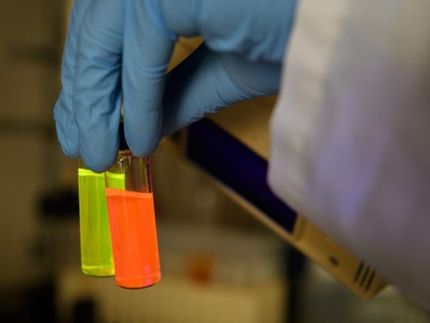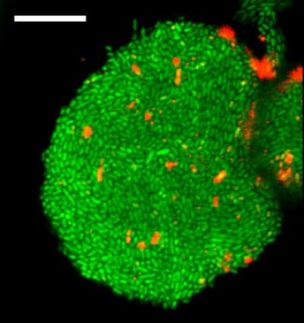Watching drug activity in single molecule
Weill Cornell Medical College (WCMC) researchers have developed a new technology that allows them to directly visualize functional motions of individual enzymes in nearly real time. That means that, for first time, researchers can see how molecular movements are affected by antibiotic binding. The findings, which are published in Nature chemical biology (6:3), may lead to the development of new drug therapies.
"Understanding molecular movements is important because enzyme function hinges on motion," said Scott Blanchard, senior author and associate professor of physiology and biophysics at WCMC. "To observe the molecule, we are decorating it with fluorescent markers, called fluorophores, that make it glow."
The fluorophores are attached to the biomolecule and are designed to exchange energy with each other in a way that accurately reports on the distance between them, like a molecular global positioning system. This process is called fluorescence resonance energy transfer. When applied to the study of single-molecules, one can actually use this technique to monitor changes in the structure of individual enzymes as they function.
Traditionally, to understand how drugs affect enzymes, researchers have measured changes in the rate at which an enzyme generates product, which often requires a great deal of starting material. The new single-molecule approach provides the ability to observe enzyme function from the perspective of motion, and how such motions are influenced by the presence of substrates or drug compounds.
In the current study, Blanchard and his team investigated whether the binding of aminoglycoside-class antibiotics - an important family of clinically useful small-molecule compounds - affects how the ribosome moves. The ribosome, one of the largest and most essential molecular machines in the cell, is the target of almost half of all known antibiotics currently in use.
The aminoglycosides, while highly effective, tend to be toxic. Blanchard's goal was to explore the relationship between aminoglycoside activities and ribosome movements and to search for compounds with more potent activities but that have fewer side effects.
While the approach has many advantages, one of the most valuable is that it is "green," said Blanchard. As implied by its name, single-molecule methods are characterized by a greatly reduced demand for biological material. Consequently, less human and capital costs go into large-scale sample preparations. In principle, the researchers believe the single-molecule technique may one day be engineered to require a million times less starting material than is required by traditional drug screening methods.
"In addition to this material advantage, the information content of the single-molecule approach is greater, increasing the cost effectiveness of each experiment," said Blanchard. "Our challenge now is to understand whether the approach is generalizable to other enzyme systems where an understanding of its regulation and the mechanism of drug action are lacking."
Co-authors of the study include Michael Feldman, Daniel Terry and Roger Altman, all from WCMC. The study was supported by the National Institute of General Medical Sciences.
Topics
Organizations
Other news from the department science

Get the analytics and lab tech industry in your inbox
By submitting this form you agree that LUMITOS AG will send you the newsletter(s) selected above by email. Your data will not be passed on to third parties. Your data will be stored and processed in accordance with our data protection regulations. LUMITOS may contact you by email for the purpose of advertising or market and opinion surveys. You can revoke your consent at any time without giving reasons to LUMITOS AG, Ernst-Augustin-Str. 2, 12489 Berlin, Germany or by e-mail at revoke@lumitos.com with effect for the future. In addition, each email contains a link to unsubscribe from the corresponding newsletter.






















































